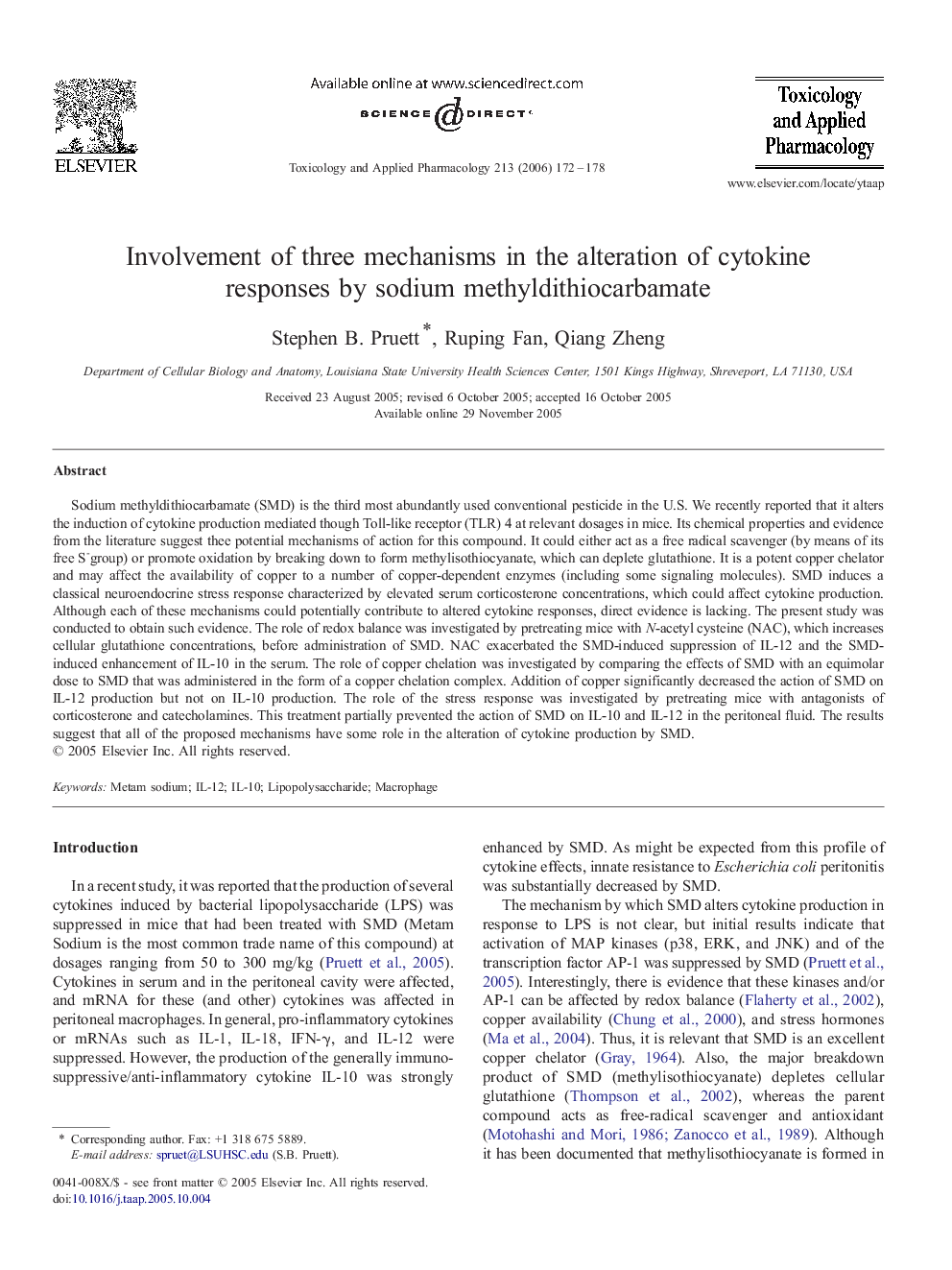| Article ID | Journal | Published Year | Pages | File Type |
|---|---|---|---|---|
| 2572036 | Toxicology and Applied Pharmacology | 2006 | 7 Pages |
Sodium methyldithiocarbamate (SMD) is the third most abundantly used conventional pesticide in the U.S. We recently reported that it alters the induction of cytokine production mediated though Toll-like receptor (TLR) 4 at relevant dosages in mice. Its chemical properties and evidence from the literature suggest thee potential mechanisms of action for this compound. It could either act as a free radical scavenger (by means of its free S-group) or promote oxidation by breaking down to form methylisothiocyanate, which can deplete glutathione. It is a potent copper chelator and may affect the availability of copper to a number of copper-dependent enzymes (including some signaling molecules). SMD induces a classical neuroendocrine stress response characterized by elevated serum corticosterone concentrations, which could affect cytokine production. Although each of these mechanisms could potentially contribute to altered cytokine responses, direct evidence is lacking. The present study was conducted to obtain such evidence. The role of redox balance was investigated by pretreating mice with N-acetyl cysteine (NAC), which increases cellular glutathione concentrations, before administration of SMD. NAC exacerbated the SMD-induced suppression of IL-12 and the SMD-induced enhancement of IL-10 in the serum. The role of copper chelation was investigated by comparing the effects of SMD with an equimolar dose to SMD that was administered in the form of a copper chelation complex. Addition of copper significantly decreased the action of SMD on IL-12 production but not on IL-10 production. The role of the stress response was investigated by pretreating mice with antagonists of corticosterone and catecholamines. This treatment partially prevented the action of SMD on IL-10 and IL-12 in the peritoneal fluid. The results suggest that all of the proposed mechanisms have some role in the alteration of cytokine production by SMD.
